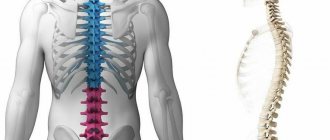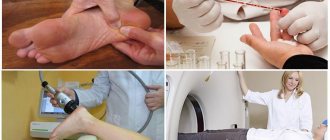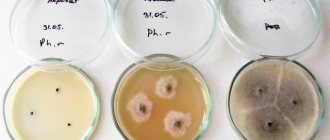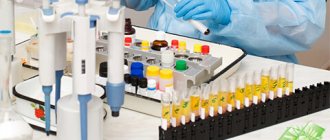Transcript of the report
Based on the above, we realized that when deciphering the analysis report, such parameters as hemoglobin level, leukocyte count, erythrocyte count, erythrocyte media volume, average hemoglobin concentrate in erythrocyte, and platelet count are involved.
So, let’s decipher the main indicators that are provided to us in the report:
- WBC is nothing but white blood cells. Acceptable indicators are from 4 to 9* 109/l.
- RBC - red blood particles determine the exact number of red blood cells in the blood. For women and men, acceptable indicators differ slightly in the upper range. The norm for women is 3.5-4.5 * 1012, for men 3.5-5.5 * 1012.
- HGB is considered a parameter of hemoglobin in the blood, where normal values for a man are 130-150 g/l, and for a woman 120-140 g/l.
- HCT is a hematocrit that shows the number of red blood cells directly in the blood plasma. The norm is expressed as a percentage and ranges from 0.39 to 0.49.
- PLT - platelets that show the absolute value of platelets in the blood. The main component is to stop bleeding.
Red blood cell indices:
- MCV - average erythrocyte volume.
- MCH is the average number of hemoglobin in an individual red blood cell.
- MCHC is a medium-value concentrate found in hemoglobin.
Platelet indices:
- PDW – platelet heterogeneity value
- MPV – average platelet volume.
- PCT - thrombocrit is considered to be part of the volume of the basis of the platelet.
Naturally, for the hematological study performed, its own standards were predetermined. When deciphering each indicator, it is necessary to take into account the reference values of the laboratory where the analysis is actually carried out. As a rule, automatic hematology analyzers create graphs on their own, and the specialist only examines them and prescribes (if there is an infection) or does not prescribe (if there is no infection) medications.
Our service will select the best hematologist for you free of charge when you call our Unified Appointment Center by phone. We will find an experienced doctor near you, and the price will be lower than if you contact the clinic directly.
Application for free selection of a doctor Our operator will call you back within 10 minutes and recommend a doctor
By submitting this form, you agree to the Rules
Interpretation and norms of a general clinical blood test in adults
When studying a blood test from a finger, pay attention to the level and quantity of the following formed elements:
- red blood cells;
- hemoglobin;
- hematocrit;
- reticulocytes;
- average amount and % concentration of hemoglobin in red blood cells;
- leukocytes;
- platelets.
In addition, ESR (erythrocyte sedimentation rate), prothrombin time and color index are calculated.
When presenting the test results to the doctor, the laboratory assistant describes in detail the leukocyte formula, which includes values for six types of leukocytes: eosinophils, lymphocytes, monocytes, band neutrophils, segmented neutrophils.
Table No. 1 presents the norms of general blood test indicators in women and men.
Table No. 1
| Analysis indicators | As indicated in the laboratory | Normal for women | Normal for men |
| Red blood cells (× 10x12/l) | R.B.C. | 3,6-4,6 | 4,1-5,2 |
| Average erythrocyte volume (fl or µm3) | MCV | 82-98 | 81-95 |
| Hemoglobin (g/l) | HGB | 122-138 | 128-150 |
| Average HGB level in erythrocyte (pg) | MCH | 26-32 | |
| Color indicator | CPU | 0,8-1,2 | |
| Hematocrit (in % ratio) | HCT | 35-44 | 40-50 |
| Platelets (× 10x9/l) | PLT | 178-318 | |
| Average concentration of red blood cells in hemoglobin (%) | MCHC | 31-38 | |
| Reticulocytes (%) | RET | 0,4-1,3 | |
| Leukocytes (× 10x9/l) | WBC | 4-10 | |
| Average platelet volume (fl or µm3) | MPV | 8-12 | |
| ESR (mm/h) | ESR | 2-8 | 2-16 |
| Anisocytosis of erythrocytes (%) | RFV | 11,3-14,6 | |
Table No. 2 shows the norms of the leukocyte formula
Table No. 2
| Index | × 10x9/l | % ratio | |
| Neutrophils | segmented | 2,1-5,4 | 43-71 |
| stab | 0,4-0,3 | 1-5 | |
| Basophils | up to 0.063 | up to 1 | |
| Eosinophils | 0,02-0,3 | 0,5-5 | |
| Lymphocytes | 1,1-3,1 | 17-38 | |
| Monocytes | 0,08-0,5 | 3-12 | |
What affects the increase or decrease of a particular formed element or indicator in a general clinical blood test? Let's take a closer look.
Red blood cells
An increase in the level of red blood cells in a general blood test most often occurs in the following conditions:
- oxygen starvation of the body;
- previous dehydration and disturbance of water-salt balance;
- acquired heart defects, for example, after suffering a severe infectious disease;
- dysfunction of the adrenal cortex;
- overdose of drugs from the group of glucocorticosteroids;
- erythremia.
A decrease in the level of red blood cells from the described norm is observed in the following conditions:
- Iron-deficiency anemia;
- pregnancy in the 2nd and 3rd trimesters;
- suffered blood loss and decrease in BCC (circulating blood volume);
- red bone marrow diseases;
- chronic inflammatory diseases in the body.
Hemoglobin
An increased hemoglobin content in a blood test indicates:
- increased platelet count in the blood;
- disturbance of the water-salt balance in the body as a result of prolonged diarrhea or vomiting;
- blood thickening due to impaired coagulation function;
- overdose of antianemic drugs;
- erythremia.
A decrease in hemoglobin level in a blood test indicates the following conditions:
- Iron-deficiency anemia;
- internal bleeding;
- oncological neoplasms;
- bone marrow damage;
- kidney diseases characterized by impaired kidney function.
Hematocrit
Hematocrit is the number of red blood cells in the blood plasma; it is by this indicator that the severity of iron deficiency anemia is determined. An increase in hematocrit level indicates the following conditions:
- dehydration of the body;
- peritonitis;
- severe extensive burns;
- polycythemia.
A decrease in hematocrit indicates the following conditions:
- anemia associated with iron deficiency in the body;
- heart pathologies;
- vascular diseases and kidney pathologies;
- chronic hyperazotemia (increased nitrogen levels in the blood)
Color indicator
The ratio of the amount of hemoglobin in one red blood cell according to normal parameters is a color indicator. An increase in CPU indicates:
- lack of cyanocobalamin in the body;
- vitamin B9 deficiency;
- polyps in the stomach;
- tumor malignant diseases.
A decrease in color index occurs in the following conditions:
- anemia in pregnant women;
- an increase in blood volume (during pregnancy, when a third placental circulation is added);
- lead poisoning.
Platelets
Platelets are responsible for normal blood clotting. A decrease in platelet levels is observed when:
- leukemia;
- AIDS;
- poisoning with alcohol, drugs, chemicals;
- long-term therapy with antibiotics, estrogens, hormonal agents, Nitroglycerin, antihistamines;
- aplastic anemia;
- bone marrow diseases.
An increase in platelet levels in a blood test indicates the following possible conditions:
- colitis;
- tuberculosis;
- osteomyelitis;
- joint diseases;
- malignant neoplasms;
- cirrhosis of the liver;
- myelofibrosis;
- rehabilitation period after surgical interventions.
ESR
A decrease in erythrocyte sedimentation rate is observed in the following conditions:
- anaphylactic shock;
- heart disease;
- vascular pathologies.
An increase in ESR is typical for:
- pregnancy;
- exacerbation of chronic diseases;
- poisoning;
- anemia;
- connective tissue diseases;
- infectious and inflammatory diseases;
- liver and kidney diseases.
Average platelet count
There are young and mature platelets in the blood, with the former being larger and the latter being slightly reduced in size. The average lifespan of platelets is approximately 10 days, after which they are replaced by new young cells. The lower the MPV, the fewer mature platelets in the blood and vice versa.
An increase in MPV levels is typical in the following conditions:
- diabetes;
- systemic lupus erythematosus;
- rehabilitation period after surgical removal of the spleen;
- alcoholism;
- blockage of the lumens of blood vessels with atherosclerotic plaques;
- thalassemia (genetic pathology characterized by a disorder in the structure of hemoglobin);
- thrombocytodystrophy.
A decrease in MPV levels occurs in the following conditions:
- cirrhosis of the liver;
- anemia (megaloblastic and plastic);
- rehabilitation period after radiation therapy;
- Wiskott-Aldrich syndrome.
Leukocytes
An increase in the level of white blood cells in the blood is called leukocytosis, and a decrease in white blood cells is called leukopenia. Leukocytes perform a difficult role - when viruses or infectious agents enter the body, these cells absorb a foreign object and give a signal to the immune system so that antibodies begin to be produced, which in the future will immediately recognize the foreign object and destroy it. Leukocytosis can be physiological and pathological.
Physiological leukocytosis is characteristic of:
- pregnancy;
- childbirth;
- the period before menstruation;
- increased physical activity;
- overheating or hypothermia;
- increased psycho-emotional stress.
Pathological leukocytosis is observed when:
- purulent inflammatory diseases;
- received severe burns;
- use of the hormone insulin;
- malignant tumors in the body;
- epilepsy;
- severe poisoning;
- allergic reactions.
Leukopenia is typical for:
- cirrhosis of the liver;
- systemic lupus erythematosus;
- lymphogranulomatosis;
- leukemia;
- bone marrow hypoplasia;
- taking certain medications;
- radiation sickness;
- hepatitis;
- malaria;
- acromegaly;
- measles.
The best hematologists
Make an appointment by phoneAdd to comparison33 reviews 9.2 rating Kuznetsov Sergey Vadimovich HematologistExperience 33 years. Doctor of the highest category Cost of appointment - 2950 rubles. 1920r. only on medportal.net!
Make an appointment by phone. Engaged in the diagnosis and treatment of diseases such as leukemia, lymphogranulosis, lymphoma, anemia, hemophilia, multiple myeloma and other blood diseases and pathologies of the hematopoietic organs. Moscow, Prospekt Mira, 105, building 1. Alekseevskaya, VDNH Make an appointment by phone 8 (499) 519-35-82 Add to comparison219 reviews 9.5 rating Pavlova Olga Alekseevna Hematologist Experience 25 years. Candidate of Medical Sciences Doctor of the highest category Cost of appointment - 3490 rubles. Make an appointment by phone Hematologist. Conducts diagnosis and treatment of hematological diseases, chronic lymphoproliferative diseases, hemostasis disorders. Proficient in techniques for performing bone marrow puncture and trepanobiopsy of the ilium. Author of chapters in the national guide “Oncology”, clinical recommendations “Oncology”, more than 20 publications in scientific journals. Moscow, st. Nizhnyaya Krasnoselskaya, 15/17. Baumanskaya, Komsomolskaya, Krasnoselskaya Make an appointment by phone Add to comparison19 reviews 8.8 rating Fedulova Anna Anatolyevna Hematologist Experience 25 years. Doctor of the highest category Cost of appointment - 3500 rubles. Make an appointment by phone. Provides care for inpatient and outpatient patients and treats hematological patients, and also provides care for pregnant women with genetic thrombophilia and other hematological diseases, and prepares for IVF.g. Moscow, Volgogradsky Prospekt, 42, building 12. Tekstilshchiki Make an appointment by calling 8 (499) 519-35-82 Add to comparison63 reviews 8.4 rating Shirokov Alexey Sergeevich Hematologist 13 years of experience. Cost of appointment - 3500 rubles. Sign up for appointment by phone Engaged in the diagnosis and treatment of hematological diseases, malignant and non-malignant blood diseases, anemia of pregnant women, thrombophilia. Moscow, st. Klara Zetkin, 33, bldg. 28. Voykovskaya, Baltiyskaya
Hematocrit, leukocytes
- The hematocrit blood test shows the ratio of red blood cells, platelets and white blood cells present in the blood as a percentage of the plasma. The normal rate for women is 35-45%, for men - 39-49%. Its increase can occur with the development of pathological conditions, such as blood thickening, some types of hemoglobinopathies, and symptomatic erythrocytosis.
- The study makes it possible to determine a low hematocrit in cases where a person has developed anemia, overhydration has occurred, pregnancy has occurred, or blood volume has increased.
- Leukocytes are presented in the body as white blood cells. It is a component of the human immune system. Normally, leukocytes range from 4 to 10 thousand per 1 ml. If the interpretation of a blood test reveals an overestimated indicator, we can talk about the presence of an infection in the body or the development of an inflammatory process. In such cases, there is a possibility of hemolysis or leukemia.
- A similar reaction of the body can be observed due to acute blood loss and allergies. A low rate can be found in diseases of infectious etiology, for example, influenza, rubella, measles. Its decrease is observed in aplastic anemia, as well as hereditary immune disorders and increased spleen function.
What kind of analysis is this
After it is carried out, the doctor receives information about a number of indicators:
- Red blood cells.
- Leukocytes are white elements.
- The amount of hemoglobin (blood coloring).
- Neutrophils, which are responsible for the level of the immune system, eliminate the penetration of infection.
- ESR – erythrocyte sedimentation rate (outdated name – ROE, i.e. erythrocyte sedimentation reaction).
- Basophils are elements that produce histamine.
- Eosinophils. They are responsible for fighting parasites and allergens.
- Monocytes are important elements responsible for immunity.
- Lymphocytes are cells of the immune system that eliminate viruses and pathogenic microorganisms.
- Platelets, which are involved in blood clotting.
- Reticulocytes are immature red blood cells.
- The proportion of leukocyte elements in the blood (determined as a percentage).
The analysis in question gives the most accurate results compared to other methods, so doctors consider it necessary to prescribe it first.
What are red blood cells
These are red blood cells. They are formed in the red bone marrow. To study red blood cells, not one blood test is performed, but several: MCV, RBC, RDW.
The RBC study shows the presence of a certain amount of hemoglobin in the blood, which takes part in the distribution of oxygen and the release of carbon dioxide from the body. Normally, the analysis detects the content of red blood cells in the blood ranging from 4 to 5 million/ml. It should be taken into account that the level of red blood cells in men is higher than in women.
An increased rate is possible due to the development of polycythemia, which affects the bone marrow, and the loss of a large amount of blood, as a result of which the latter thickens. A low concentration of red blood cells can occur due to problems with their formation and blood loss.
In RDW blood testing, hematology analyzers show how red blood cells are distributed based on size. That is, as a result of this study, their placement by volume is determined. This blood test is one of the main ones when checking the condition of red blood cells.
The MCV test displays the average volume of a red blood cell, measured in femtoliters (fl) or micrometers (µm). The standard value corresponds to 80-95 fl.
What does a hematological blood test show and why is it needed?
Blood tests for various purposes are considered the main diagnostic procedures, important and very informative in determining the picture of the general condition of a sick person and drawing up an expanded clinical diagnosis.
- Hematological blood test - what does it show and why is it needed?
- How is the analysis carried out? This is the transcript of the analysis results, which shows:
- The doctor receives detailed information:
When receiving a ready-made hematological blood test for adults from the laboratory, the doctor makes the decoding, checking the norm tables determined by gender and age. A blood test most accurately clarifies the expected diagnosis, determines the type of infection, the state of the immune system, and possible damage to the hematopoietic system.
It is necessary to prepare for such an analysis in advance. Blood is drawn in the morning, on an empty stomach. In addition, 2-3 days before donating blood, you must stop taking medications that affect blood clotting, even if the medicine is prescribed by a doctor and taken according to the regimen. In the days leading up to the analysis, it is necessary to exclude alcohol from the diet, as well as everything fried, salty, and fatty.
A classic option for maintaining any diet, which is very important for a complete deciphering of a hematological blood test.
In addition, nicotine causes peripheral vessels to experience sharp spasms, which will undoubtedly affect the results of a blood test. A clinical test is not prescribed by a doctor for an obvious viral infection, since it is clear that the presence of a virus will distort the picture of the result. These rules are important for accurately deciphering the analysis in adults and children. It is necessary to follow these rules in order for the blood test to be as accurate as possible.
https://www.youtube.com/watch?v=9F0z4E9_a8Q
Decoding the results
The final report with the results of a blood test consists of terms and designations that are not familiar to the average person. Therefore, decoding must be done by a qualified doctor who has a sufficient level of knowledge.
If there is a strong desire, the patient himself can decipher the report; to do this, it is necessary to determine the presence of deviations from the norm in accordance with the table below. It must be taken into account that normal indicators in an adult, depending on gender, and in a child will differ significantly.
Hematological blood tests have been used in medicine for quite some time. This study of biomaterial is otherwise called a general blood test and is aimed at implementing a general examination of the patient’s body.
Hematological diagnostics are prescribed to almost all patients who are admitted to the doctor’s office with any complaint. In this case, the nature of the problem does not play a special role, since a general examination of the body is periodically required even for an absolutely healthy person.
We’ll talk more about the essence, features and norms of “hematology” in today’s article. Interesting? Then be sure to read the presented material to the end.
Preparation and execution
Hematological analysis is performed in the morning on an empty stomach. Preparation should start a couple of days before the expected blood draw. It is recommended to simply adhere to a number of simple rules.
Two to three days before the test is taken, you should stop taking medications that affect blood clotting. For the same period of time, it is recommended to exclude fried and fatty foods and alcoholic beverages from the diet. It is recommended to stop drinking caffeine-containing drinks at least 24 hours in advance.
On the day when blood is taken, you should give up cigarettes, since nicotine leads to spasms in peripheral vessels. You should not take the test if you know about the presence of viral infections in the body, since the overall picture of a simple preventive check will be distorted in this case.
It is recommended to take the last meal eight hours before the test. To carry out the analysis, control blood is used as the material. This term refers to mixed blood cells, preservatives and a special liquid that performs the function of plasma. Blood can be collected either from a vein or from a finger. It all depends on the immediate purpose of the inspection.
After the blood has been collected, the sample is sent to a laboratory for analysis. For hematology, special analyzers of the same name are used. They are a device powered by electricity, into which special reagents and a test tube with a sample are inserted. Literally within a matter of minutes, the doctor can receive a form with the results, which will be printed on it.
How is the analysis carried out?
To carry out the analysis, it is necessary to collect physiological fluid - blood in a control amount, which is used as a working material.
The working material contains blood cells, biological preservatives and a special liquid similar in composition to plasma. Blood is taken from the patient's vein and sent to the laboratory. The study is carried out using a special laboratory device - a hematology analyzer. Gone are microscopes and manual counting of particles that make up the blood.
The electric device is filled with special reagents, a test tube with control blood is installed in it, and after a few minutes the device issues a printed form indicating the date and time of the analysis, and the patient’s name.
This is the transcript of the analysis results, which shows:
- blood cells,
- reticulocytes,
- hemocrits,
- hemoglobin,
- general formula of leukocytes,
- exact granulocyte count.
The most modern hematology analyzers, equipped with software and connected to computer devices, determine:
- lymphocyte content,
- monocyte count,
- number of neutrophils,
- are there eosinophils?
In addition to the number of constituent blood particles, the device also determines their condition. Analyzers with software provide a highly accurate and competent interpretation of a hematological blood test; the doctor checks the table of standards to make adjustments based on the patient’s age, weight, and general condition.
With the use of a hematological analyzer, the hematological blood test is deciphered literally online, and the patient quickly begins the prescribed treatment. Does the device not count band and segmented neutrophils? This is not a problem - laboratory assistants can do this using the same microscopes with increased resolution. The devices are quite expensive, but private and departmental clinics can afford such purchases.
Test tubes with purple cap
EDTA-K2, EDTA-K3. The color of the lid is lilac.
Ethylenediaminetetraacetate (EDTA) is the anticoagulant of choice for hematology studies.
EDTA and its alkaline salts are capable of creating chelate compounds with calcium ions to form soluble, highly stable complexes. The most effective concentration of EDTA is 1.2 mg/ml of blood. Three types of EDTA salts are used throughout the world: EDTA-K3, EDTA-K2 and EDTA-Na2. The most preferred and recommended by the International Commission for Standardization in Hematology is the dipotassium salt EDTA: EDTA-K3 shows a lower ability to maintain blood in a liquid state, and EDTA-K3 also affects the count of leukocytes, underestimating their number. the differences between EDTA-K2 and EDTA-Na2 are clinically insignificant and can be neglected, but EDTA-Na2 is less soluble. To obtain a high-quality analysis result, it is necessary: immediately after drawing blood, carefully invert the tube 5-7 times for better mixing of blood and anticoagulant; the plasma is separated after centrifugation. Normal centrifugation speeds are 1000-1500G (2000-3000 rpm). If necessary, centrifugation is allowed at an acceleration of 4000G with a lid and up to 12000G without a lid.
The most widely used tubes contain 1.95 mg EDTA/1 ml blood. They have found their application in such areas of laboratory practice as: hematological studies - counting blood cells, determining ESR, etc. PCR studies (qualitative and quantitative techniques).
Tubes with blood samples can be stored for up to 6-10 hours at 4ºC; storage beyond 24 hours is not recommended due to a decrease in the number of red and white blood cells.
EDTA-K3 for capillary blood
Each tube contains special additives (Without capillary: Pro-coagulation, Clot Activator /Separation Gel, EDTA K2, EDTA K3, Lithium Heparin, Sodium Heparin, NaF/EDTA K2; With capillary: Pro-coagulation, Clot Activator /Separation Gel, EDTA K2, EDTA K3, Lithium Heparin, Sodium Heparin, NaF/EDTA K2.) allowing for a wide variety of types of research.
Test tubes for capillary blood are available in two types: without a capillary and with a capillary.
The blood collected for analysis will be completely safe, because the lid, which closes very easily and firmly, minimizes the aerosol effect. If you use tubes with capillaries, this will ensure that the capillary blood does not clot during collection.
Hematological analysis in adults, table
Before donating blood for laboratory testing, it is not recommended to eat food; it is better to do the procedure on an empty stomach. The optimal period for it is the morning hours.
| Comparative values | Male | Female |
| Hemoglobin | 129-160 | 119-140 |
| Red blood cell concentration | 3,9-5,1 | 3,6-4,7 |
| Reticulocytes | 2,3-17 | 1,2-20,5 |
| Platelet level | 181-320 | 181-320 |
| Erythrocyte sedimentation rate | 1-10 | 2-15 |
| Leukocytes | 4-9 | 4-9 |
| Lymphocytes | 17-40 | 17-40 |
| Monocytes | 2-9 | 2-9 |
Some standards of tabular values for men and women are the same, and some are significantly different. In any case, it is better for a specialist to decipher the results.
What is the norm of numerical values
You can accurately understand whether a person’s health is normal by knowing the normal levels of blood elements. The norm is:
- BKT - 4–9*109/l.
- Red blood cells - 3.80-5.10*1012/l.
- ESR - 8-12 mm/h.
- The width of their distribution is 11.5–14.5%.
- The volume of erythrocyte cells is 80-100 fl.
- Hemoglobin level is 0.9–1.1.
- Platelet cells - 180–320*109/l.
- Reticulocyte cells - 0.24–1.7%.
- Basophil cells - 0.01–0.065*109 g/l.
- Lymphocyte cells - 1.2–3*109/l.
- Monocyte cells - 0–0.08*109/l.
- Eozonophiles - 1–5%.
- Hematocrit – 42-50%.
- Color indicators – 26-34pg.
At the same time, the meaning of the indicators is clear only to doctors, who, based on the results obtained, can accurately diagnose the disease. Hematological analysis in adults and children is not the same.
On a note! Each age has its own standards and symbols.
Using these values, you can decipher the results of a child’s blood examination:
- The hemoglobin level in newborns reaches 180-240, in older children - 110-150.
- The number of red blood cells will be 3.6-4.8 for newborns and 3.7-5.1 for older children.
- The reticulocyte count will vary from 4.4-21 to 2-11.
- Platelet level – from 180-400 to 160-360.
- The erythrocyte sedimentation rate in a newborn is 4-8, and in schoolchildren - 4-15. 6. The concentration of leukocytes will be 4.3-9.5.
- The number of lymphocyte cells is 40-76 in infants and 25-50 in schoolchildren and adolescents.
- The number of monocyte cells will be 2-10.
Deciphering hematoanalysis is a complex matter that requires professionalism.











